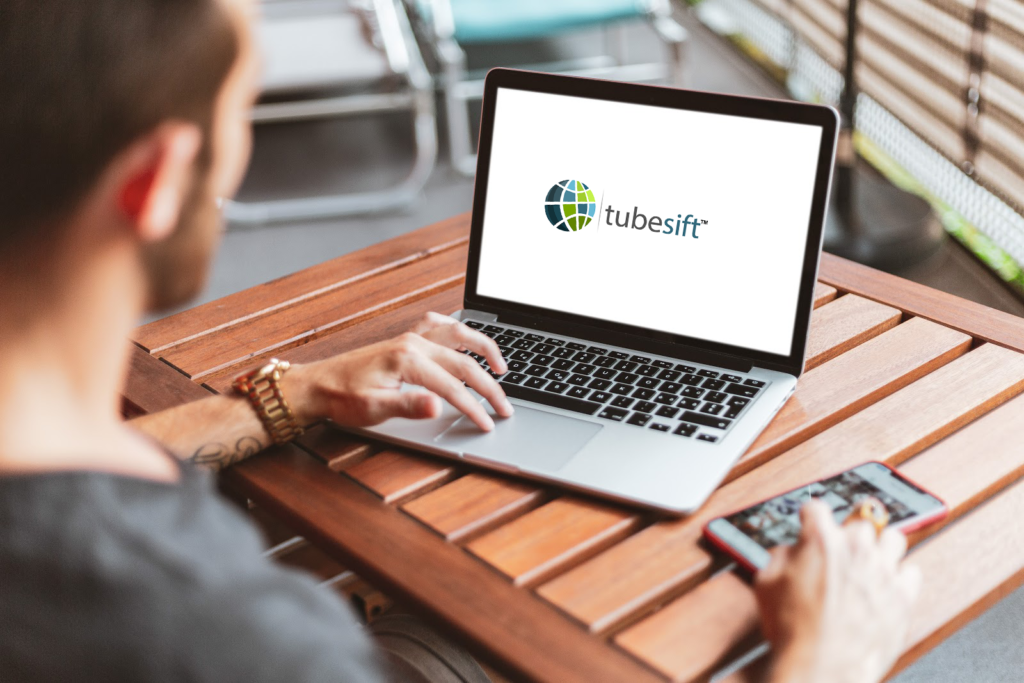 Membership TodaySign Up Now
Membership TodaySign Up NowVideo Transcript:
YouTube’s Updated Terms of Service
Hey, what is up, everybody? Justin Sardi, co-founder and CEO of TubeSift.com, here. And today, we’re going to be talking all about a crazy new update to the YouTube terms of service that has creators pissed off, freaking out, and also has a lot of online marketers very confused and putting out false information on what’s actually going on.
Today, we’re going to be talking all about the right to monetize, and it’s a new little piece of their terms of service that YouTube put out at the end of November. Let’s go ahead and dive right in, pull up exactly what the terms of service say and we’ll break down what this means for us, as advertisers, on YouTube and also for creators on YouTube.

What we’re going to be talking about today is the new section to the terms of service that YouTube added called the right to monetize. Now, like I said, this has creators freaking out, marketers saying, “Oh, this is going to allow us to put ads on every single video,” blah, blah, blah. I want to clarify a few things, talk about what exactly this does mean by showing you what they actually put out, giving you their exact words, and talk a little bit about how TubeSift is going to be adapting going forward.
The Right to Monetize
Now, the new section right here, it says, “Right to monetize. You grant YouTube the right to monetize your content on the service and such monetization may include displaying ads on or within content or charging users a fee for access. This agreement does not entitle you to any payments.” That’s what kind of upset some of these creators. They’re saying, “Hey, if you’re not going to let me be in the Partner Program,” or whatever. But, “If I don’t enable ads on these, you’re going to let ads run and I’m not going to get any money.” And essentially, that kind of is the case but we’ll break it down a little bit further.
It says, “This agreement does not entitle you to any payments starting November 18th, 2020. Any payments you may be entitled to receive from YouTube under any other agreement between you and YouTube including, for example, payments under the Partner Program, channel membership, or Super Chat will be treated as royalties. And if required by law, Google will withhold taxes from such payments.” Essentially what changed is they said they just added that new section to their terms of service, right to monetize containing two updates. What does this mean? It’s going to mean two different things. For channels not in the Partner Program, as it says right here, what this says… And this is very important to us as advertisers as well. It says, “We added this new section to let you know, starting today, we’re going to be slowly rolling out ads on a limited number of videos from channels not in the YouTube Partner Program.”
The YouTube Partner Program
Now, when you become a YouTube partner, essentially what happens is they review your channel, make sure it’s advertiser friendly, and then you have the option to allow ads to be shown on your channel or not. Now, there are certain requirements you have to meet, there’s eligibility requirements. We’ll link to those. That’s not really important unless you’re a creator. We’re here to talk about the advertising side of things. Essentially what that’s going to mean is that if you are not in the Partner Program, meaning you have less than… I think is 1000 subscribers and X number of watched minutes. If you’re not in the Partner Program, you’re not eligible for monetization. They can still add video ads to your… They can basically turn monetization on, on your channel or on some of your videos and you don’t get paid for it, if you’re a creator.
Now, that does not mean in any way that all of the videos on YouTube are open for monetization or that you don’t need a tool like TubeSift to go out there and find these specific monetized videos. You’re still going to need to figure out which videos have monetization enabled. As it clearly states, “We are going to slowly begin rolling out ads on a limited number of videos from channels not in the Partner Program.” Now, what that also tells me is if you are in the Partner Program… And one of our channels, we actually are in the Partner Program and we have the ability to choose what types of ads we want on our content. And being in the Partner Program, I can also say, “I don’t want any ads on my channel.” And it clearly says right here, they’re only going to be doing this for channels not in the Partner Program.
All the channels still in the Partner Program that don’t want ads in front of their videos, still not monetizable, so that instantly excludes a good chunk of those videos. I was actually talking with our developer the other day, last night actually, and he was saying that it seems that about 60% or so of the videos that he found have monetization enabled, so it’s in no way all of the videos. That’s obviously an estimate that he kind of gave me, so we were just kind of talking about that last night. But what it means is, since you’re not in the Partner Program, you’re not going to be able to get money if ads are shown.
Advertiser Friendly Content
Now, YouTube is still very concerned about advertiser friendly content so they’re not going to be putting up ads on videos that are not advertiser friendly, that don’t meet the terms of service. Because, number one, I think that would really open them up for some lawsuits. If they’re telling creators, “Hey, this is not advertiser friendly content,” and then they throw up ads in front of it. That’s not okay to do. That being said, I think we’re okay there. Some of those non-monetizable videos or non-advertiser friendly videos, those are still going to remain non-monetized. All that it means is that some additional videos are going to be open for monetization. And at TubeSift, we have the monetization enabled search feature, so you’re still going to be able to use a tool just like TubeSift and find all of the videos that actually do have monetization enabled.
Now, they may change the monetization terms to something along the lines of ad enabled or something along those lines but, ultimately, TubeSift is searching for that one thing that allows ads to be shown in front of the videos, so nothing’s going to change. The only thing that’s going to change for us, as advertisers, is we might see some additional ad inventory from channels not in the Partner Program with less than 1000 subscribers that don’t quite meet those monetization requirements.

The New Terms of Service will Help Advertisers
If anything, this is a great thing for us and TubeSift is still a very relevant tool and you can always sign up at TubeSift.com. I will link to that below this video. And yeah, that’s it for me on this one. Thanks so much for watching and, hopefully, that helped clear things up a little bit as far as what this right to monetize means. If you did like this video, please subscribe to us on YouTube. Give us that thumbs up and leave us a comment. That’s it from me on this one. Bye for now.
 Membership TodaySign Up Now
Membership TodaySign Up Now


Comments are closed.